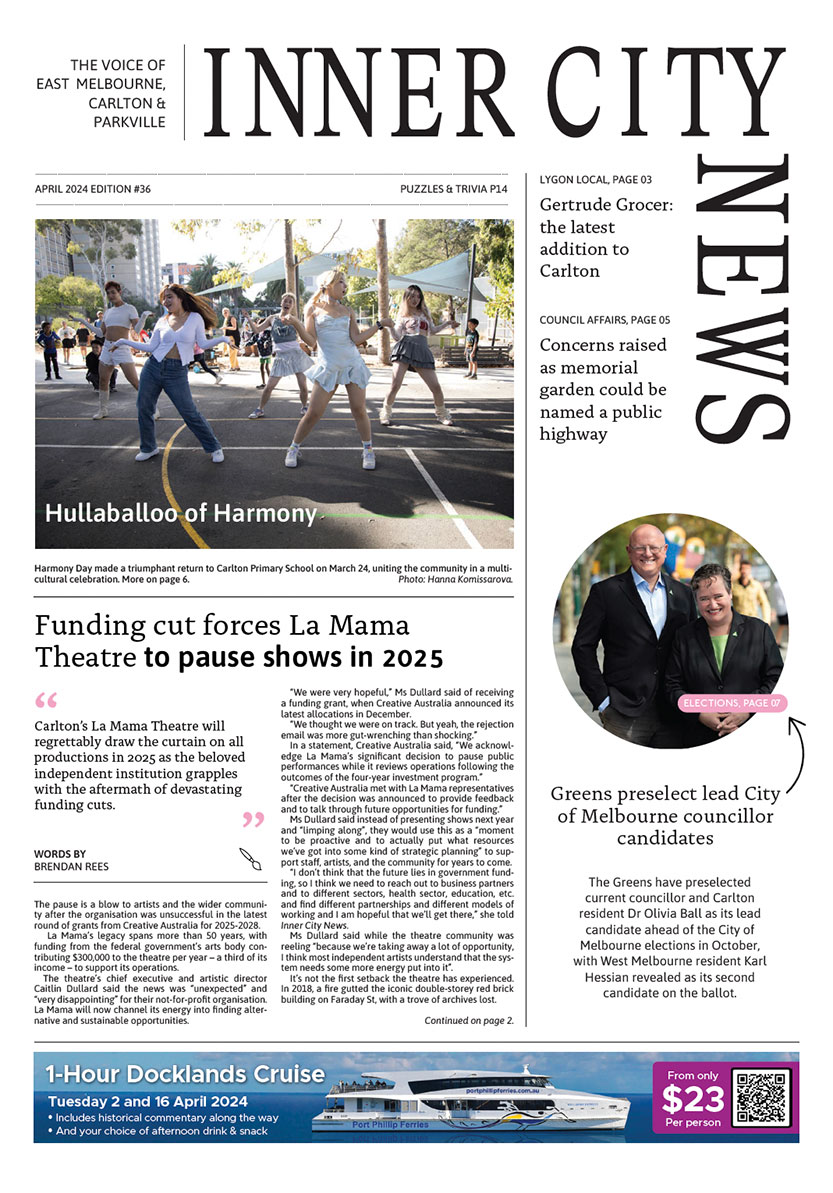Inspired by Italy
Parkville resident and Professor Emeritus at the University of Melbourne Jaynie Anderson’s love of Venetian art began on her 15th birthday when she danced in the moonlight in the Piazza San Marco in Venice.
“On the first night after dinner, we ran down the back stairs of the hotel and arrived in the absolutely empty piazza,” Ms Anderson said.
“My brother and I danced around, and this was when I fell in love with Italy.”
Decades later, in 2015, Ms Anderson, in honour of her outstanding contribution to the study of Venetian art history, primarily the painter Giorgione, was bestowed with the grand-sounding title of “Ufficiale dell’Ordine della Stella d’Italia”, an Italian knighthood, the name of which translates as the “Order of the Star of Italy”.
She is the only art historian to receive this award and one of only two recipients of the knighthood in Australia.
Giorgio Barbarelli da Castelfranco (commonly referred to as Giorgione) was an Italian artist during the High Renaissance period who died at around the age of 30 in 1510.
His work has an elusive poetic quality; however, only six existing paintings are decisively credited to him.
“I was told I would never do anything of significance if I focused on Giorgione,” Ms Anderson said.
“He was a mysterious person and did very few works, but one was found in Sydney in 2017.”
“Kim Wilson, a librarian at the Fisher Library of the University of Sydney, sent me a happy snap from her phone, and I looked at it and couldn’t believe it.”
On the last page of an edition of Dante’s Divine Comedy printed in Venice in 1497, Kim found a handwritten annotation written above a red chalk sketch of a Madonna with child, which could be by the Italian Renaissance artist Giorgione.
“It’s a sketch [by Giorgione] thinking about [Dante’s] text; it is very unusual.”
Everything of Giorgione’s is contested, yet this drawing [discovered in Sydney] seems acceptable. It is now in the Sydney University library and is quite extraordinary.
Ms Anderson has been studying the artist for 40 years.
She said he worked or painted for private patrons rather than the traditional way of working in that era for the Roman Catholic Church.
“I received the knighthood because of my services to art history and Giorgione in particular.”
She is a determined woman with a strong streak of tenacity; she is a detective in archival dungeons hunting for information.
“I am quite good at finding things in archives,” she said.
“I always advise my students that doing a difficult subject is a good thing.”
“You have to think about what might be an intelligent hypothesis, where you might possibly find something, and then you can patiently sift through.”
“It’s the hypothesis and the patience that works and is important.”
She said it would be quite fun to write a fictional biography about Giorgione because she knows him so well.
“I know he lived in Venice at a certain time; he probably knew Durer when he lived there and probably knew all sorts of interesting people.”
When asked who came behind her first true love Giorgione, she replied, “I like so many things.”
“If I am talking about Nolan, who probably had a studio [near here] during the war. My father was his doctor, and I think he is a great artist.”
“Recently, there were two major exhibitions of his work in Melbourne, one at Heide and one at Tarrawarra, both well-curated exhibitions.”
“I am quite catholic in my tastes; I look at everything.”
“I was a bit of a nerd as a child. I always loved discovering things in books.”
Before the Giorgione discovery in Sydney, she contemplated writing some historical novels because, “I’ve always been annoyed by Dan Brown and co.” •

Carlton language school championed by Ukrainian refugee





 Download the Latest Edition
Download the Latest Edition